Turffontein racecourse on a gloomy Saturday, high skies and the lazy threat of rain. Everything is immaculate, down to the last pink flower, the last blade of grass.
Even the golf cart that buzzes jockeys from the winner’s enclosure to the changing rooms for weighing seems to be driven with carefully worn pride. The driver of the cart sits bolt upright with an almost military air. He wears a straw fedora with paisley sash. This is a course that knows its place in the world, you think to yourself. All is slick, easy precision.
Despite the clockwork, the day is nothing special, a straightforward workaday meeting, featuring races such as the Jo’burg Prawn Festival Merit Rated 72 Handicap and the Book a Table (telephone number helpfully provided) Merit Rated Handicap later in the day.
Folk dribble in, punters off the street, guys with a lucky feeling, pros with grand systems, schmucks with a hunch. They huddle and pore and watch, almost inscrutable, trying to find rhythm in the dark music of chance.
So the punters wrestle with the form and the guide, pens ready, about to place bets. The Top Turf Pocket Guide, available for R14 at the door, is one of their bibles, charting history, weight, form. Full of breezy circumlocutions, the guide reads like a cross between estate agents’ patter and a determinedly upbeat horoscope.
We read that Paintyourface, running in the third race, “is taking time to win again”; there are those who are not quite so lucky, horses that haven’t won in 29 races, or “battling to show winning form”. On more than one occasion readers are told helpfully that such-and-such a horse “could make exotics pay”.
Grand affair
The flow of patrons continues. A group wanders in looking like Great Gatsby extras, flappers in tent dresses, sequinned headbands and garlands of fake pearls. They whirl away to the corporate boxes or hospitality suites, to champagne and canapés, the racing a splendid backdrop as the course curls majestically into the middle distance.
“I used to be a runner here in matric, back in 1980, taking money from the bookies down to the vaults,” says Bhekimose Sithole, a rank-and-file punter, paging his way through the form on the tables close to the totes.
“We used to notice this Indian fellow. He only bet on races one and two. That was his system. He always came away with money. He obviously had some kind of inside information, so we used to adopt that system.”
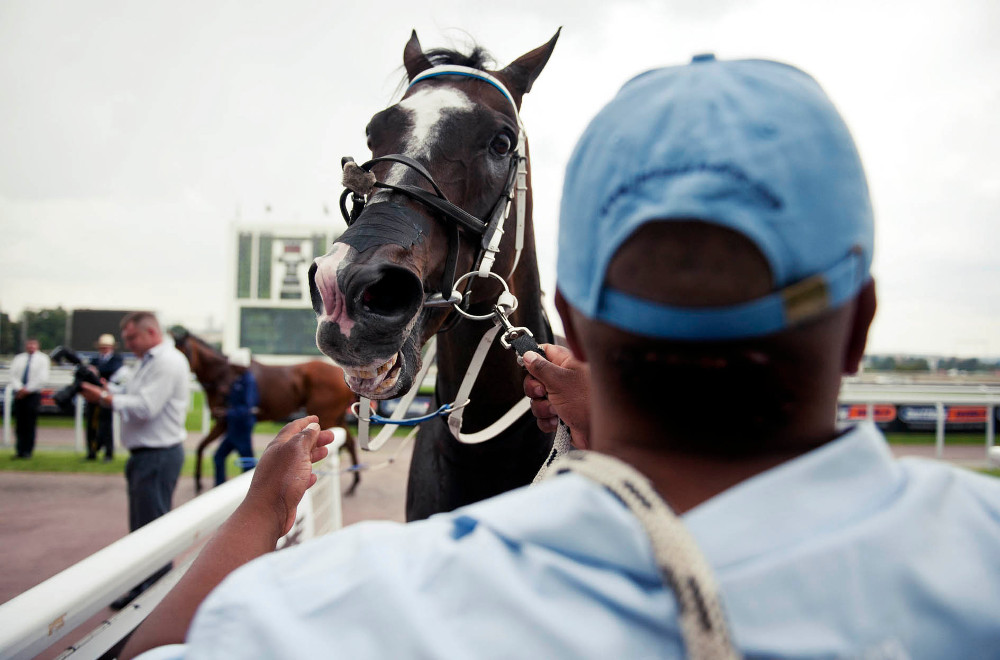
Simply keeping a decent horse costs about R15 000 a month. (Photos: Madelene Cronjé, M&G)
Sithole wanders off to place a bet, discreetly evading the question of whether he’s using the Indian’s system or his own. Shortly after he leaves, a race begins on the far side of the course. Initially there’s little to see with the naked eye, it’s too far away, although you can watch the race unfold on the big screen opposite the main grandstand. Within 10 quick seconds there’s a blur off in the distance as the horses and their riders round what is called “the elbow”, galloping towards the finish about 600m away.
At first, they appear to make no ground, standing still, but the depth of field is misleading.
Soon they are charging for the line, crazed punters shouting them home. The on-course commentator, Nico Kritsiotis, high in the grandstand watching it all through his binoculars, follows them as they pound in, calling it perfectly.
With his smooth delivery and unshakable professionalism, he reminds one of the Australian horse-racing caller Ken Howard, the man nicknamed “magic eye” for the unerring accuracy of his calling.
Professional destiny
It was Howard who immortalised the famously resonant and big-hearted line, “They’ll settle down for a run to the judge”, which has since become a staple phrase of the profession.
Kritsiotis tells me later that he started off commentating as a 16-year-old at the Ascot Racecourse in Bulawayo. He used to be that lovable but mildly annoying kid who commentated while walking between classes, or in the shower, and jumped at the opportunity to be master of ceremonies whenever the occasion arose at varsity.
His love of the sport has the charm of predestiny, as though he and the sport were bound to find each other like star-crossed lovers.
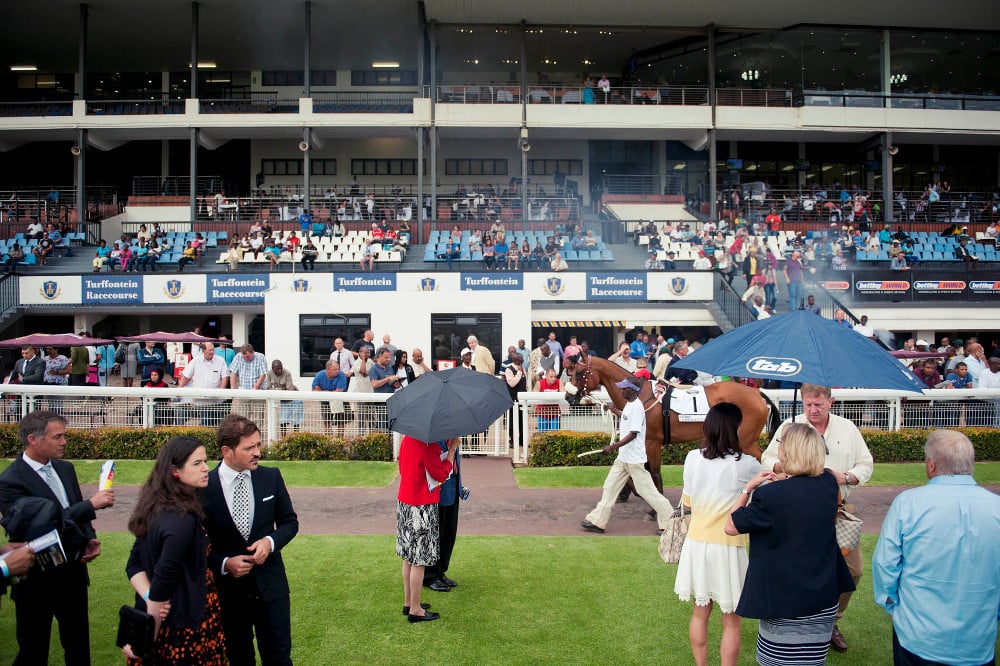
A day at the races is often a chance to dress up.
Although he listened to horse racing commentary on Radio SA as a boy in what was then Rhodesia, picking up tips from such luminaries as Peter Duffield, Sandy Bickett and Trevor Denman, he tells me that this type of apprenticeship can only take you so far.
After that, it’s trial and error, learning on the job.
His calling system is simple, he says. He knows all the owners’ colours and so identifies the colours first before the horse and the jockey; should an owner have more than one horse in the race, the jockey will be distinguished by a different coloured cap, so there’s no problem.
Tricks of the trade
Kritsiotis has trained himself to be on the lookout for distinguishing features: whether they are the colour of the reins or the blinkers, there’s always something to tell horses apart.
“About nine years ago at Turffontein I called the wrong horse home,” he admits. “It was also in yellow and black but it wasn’t the winner.
“It’s quite a discerning audience at Turffontein so you have to be careful about those sorts of things – I had to withstand the mocking and the criticism – but the very next week I was back behind the microphone. It’s all about confidence, I’m a pretty confident caller. Some people call it arrogance.”
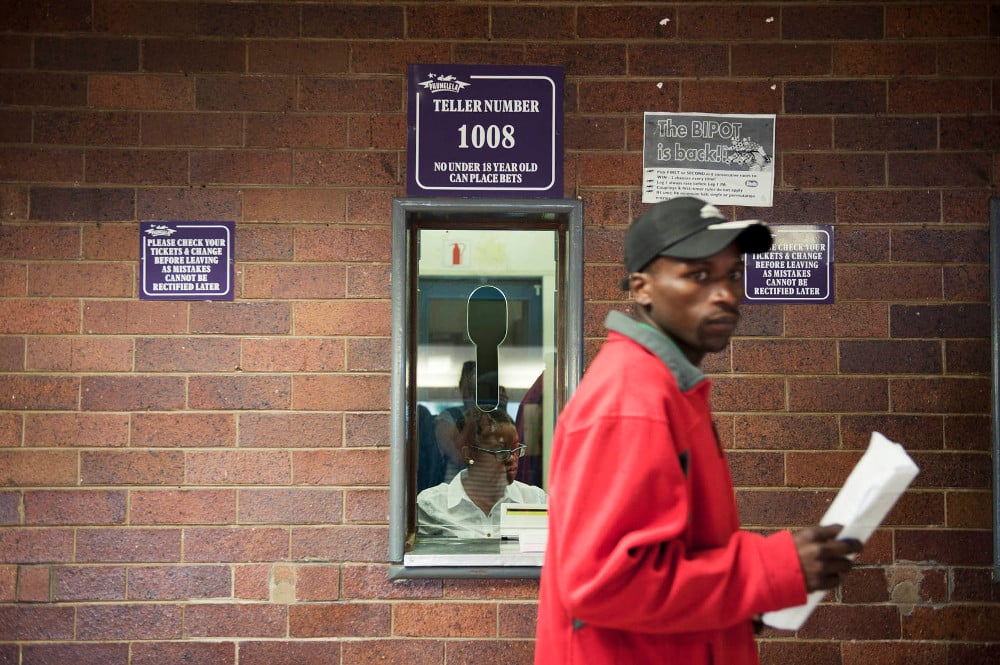
Punters use the Top Turf Pocket Guide, which charts history, weight and form, to place their bets.
Behind Turffontein’s hard-won pride, the spit and polish that sees escalators gleam and surfaces sparkle, is the story of a sport remaining in the saddle – but only just. At the most basic level, costs have escalated phenomenally.
Andy O’Connor, a co-owner who had horses in the race Kritsiotis called, says that, with trainers’ fees, veterinary costs and inoculations, feed and transport costs, simply keeping a decent horse costs about R15 000 a month.
Game for the wealthy
Consequently ownership has become concentrated in the hands of the wealthy few. This is not a game for your promiscuous grazer or someone who wants to dabble.
“Turnovers on local racing are flat,” says O’Connor. “It was in decline until a few years ago, and that’s been stopped. Still, the game’s under severe strain. Your winning bets cost a tax of 6%, whereas football bets on Arsenal versus Spurs carry no tax at all.”
More statistical muscle is provided by Colin Hall, the racing administration manager for the National Horse Racing Authority, whose figures all show a slow but discernible contraction. In 2011, for instance, there were 5 :687 horses in training, compared with last year’s 5 :314 (figures valid to August 1), and 3 :161 individual colour holders compared with 2 :441 in 2014. There were also fewer trainers in 2014 compared with 2011, significantly fewer breeders (352 to 246) and still fewer race meetings (452 to 423).
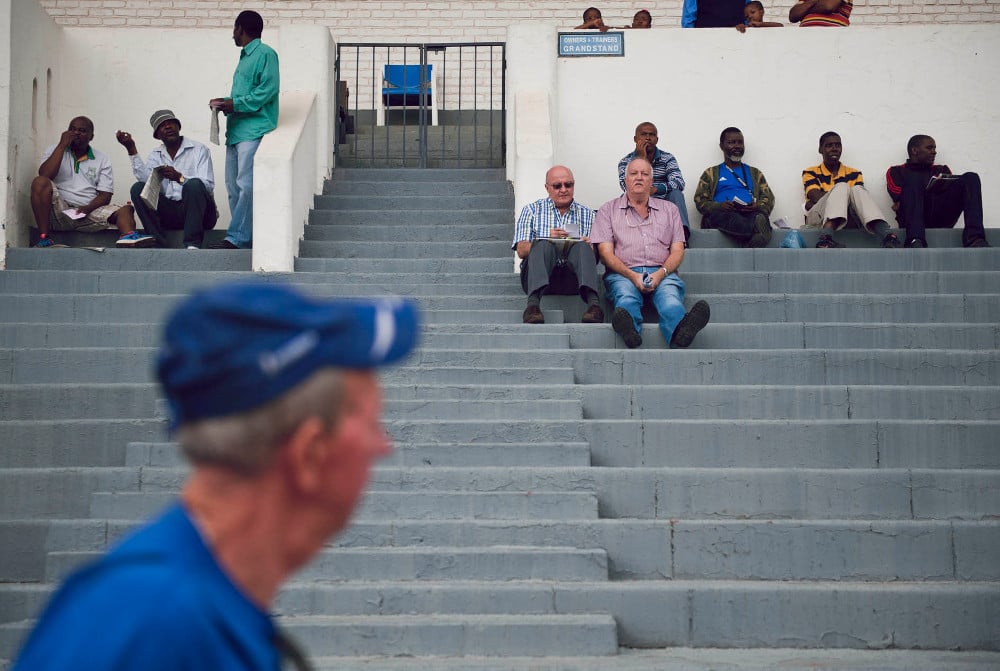
Punters wait to see whether they’ve picked a winner.
In addition, there has been an unsavoury spat between Phumelela, which owns a dwindling number of courses countrywide, as well as the tote, and the bookmakers. The difference of opinion was over intellectual property rights, with Phumelela arguing several years ago that the “exotic or open bet”, in other words, the trifectas, the swingers and the pick six, were its intellectual property. Phumelela took a group of offending bookies to the Competitions Tribunal and lost its case, opening the floodgates for all bookies to offer a variety of exotic bets.
There is another difference of opinion pending, in that Phumelela is being pressured internationally to claim on broadcast rights revenue that bookies should be paying for international races being broadcast in their shops. The argument is over percentages, with bookies’ refusing to accept Phumelela’s hike. The courts have yet to reach a decision.
The cost of romance
The initial loss over the open bet galls because, Phumelela argues, it ploughs the profits from racing back into the industry itself, whereas the bookies, who account for about half of betting revenue, give back little by comparison. This, goes the argument, is one of the reasons race winnings have remained reasonably static (they will go up slightly in Gauteng and the Western Cape this year, but so will the number of races in comparison with last year).
“We were all hoping a few years ago that the winning stake of a maiden plate [a maiden is a horse who has never won a race] would be the equivalent of keeping a horse for a year – that hasn’t been the case,” says O’Connor.
Such issues are very real and not in any way imaginary. At the same time they stand at odds with the sport’s visceral romance, a romance that is fast being forgotten in the desperate sprint for a buck.
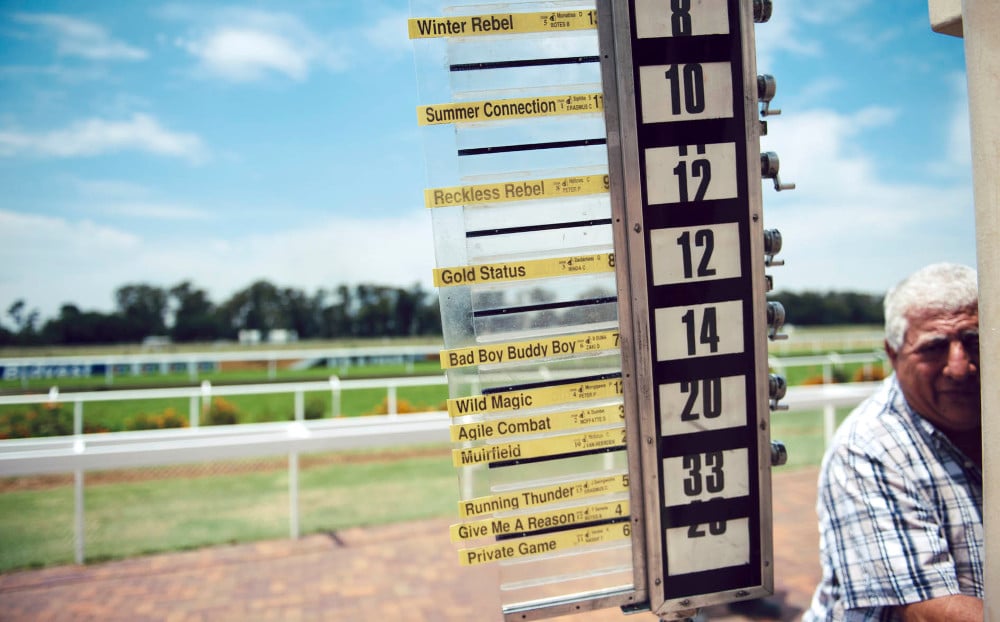
The racecourse regularly attracts punters who make a living placing bets on the daily horse races. But with increased digital broadcasting, more and more punters are staying at home.
In O’Connor’s estimation, watching the leading pack gallop home is best understood as follows: “You are watching 50kg of jockey riding 500kg of horse running at 70km/h.” If you can’t be moved by such a spectacle – and there were nice races on the card the day I was there, entrance and parking are free – then it’s perhaps better you stay at home.
Unfortunately, given the pleasures of live racing, this is exactly what more and more punters seem to be doing.
Creative marketing
The marketing men are keenly aware that they don’t want their sport to become a virtual spectacle, something it is threatening to become, particularly with Phumelela making so much of its money from live broadcasts into the betting shops of Britain and Europe, which is every day of the year except for Christmas Day. There is nothing a camera abhors more than an empty stand, so there are creative endeavours aplenty for the coming season, ways to expand the market and titillate the young.
“The year 2015 brings with it a realm of really exciting nontraditional campaigns that will ignite an interest in the myriad opportunities that the sport has to offer,” says Michael Varney, Phumelela’s national marketing manager. “Our most recent example of this has been the campaign around the Jozi Jockeys, which was used to promote the Sansui Summer Cup with a 95% digitally targeted campaign on YouTube.”
All of this seems a little like a hand stuck hopefully into a crumbling dyke. Live horse racing may ultimately become an exercise in nostalgia because its faded charms have little appeal for the young. It will pass from the urban landscape like corner cafés, Coke in bottles, the suburban sports shop where someone famous or sort-of-famous would sell you takkies with a smile and a yarn.
For better or worse, the sport’s glamour and dark secrets are part of the music of yesterday. It is an enchanting music, to be sure, but one that is increasingly difficult to hear.